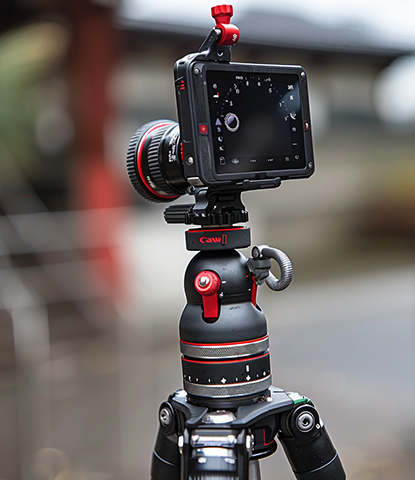

Time:2025-09-10 Views:1

The stability of camera stands is a fundamental aspect that directly impacts the quality of the captured images and videos. A stable camera stand ensures that the camera remains steady, minimizing vibrations, shakes, and unwanted movements, which can otherwise result in blurry or distorted footage. Several factors contribute to the stability of camera stands, and understanding these elements is crucial for photographers and videographers to achieve professional - level results.
One of the primary factors affecting camera stand stability is the design and construction of the stand itself. The base of the stand plays a vital role. Tripods, with their three - legged design, distribute the weight of the camera and stand evenly across the ground, providing a stable foundation. The wider the spread of the tripod legs, the more stable it becomes. Some tripods also feature adjustable leg angles, allowing users to adapt to uneven terrain or different shooting heights while maintaining stability. Monopods, on the other hand, rely on the user's body for additional support. Their stability depends on the user's ability to balance the stand and camera combination, as well as the design of the monopod's foot or spike, which provides traction on the ground.
The material used in the construction of the camera stand also influences its stability. Stands made from heavy - duty materials such as steel or thick - walled aluminum are generally more stable due to their increased weight and rigidity. These materials can withstand external forces, such as wind or accidental bumps, without easily tipping over. However, they are also heavier and less portable. Lighter materials like carbon fiber offer a good balance between stability and portability. Carbon - fiber stands are strong and rigid enough to support a reasonable amount of camera equipment while being lightweight, making them suitable for on - the - go shooting. However, they may require additional precautions, such as using sandbags or weights, in windy or unstable conditions to enhance stability.
The center column of the camera stand is another important component. Some stands feature a telescopic center column that can be extended to increase the height of the camera. While this provides flexibility in adjusting the shooting angle, extending the center column too high can reduce the stability of the stand. It raises the center of gravity of the camera and stand assembly, making it more prone to tipping. To maintain stability, it's advisable to keep the center column as low as possible and use the leg adjustments to achieve the desired height.
The load - bearing capacity of the stand, as mentioned earlier, is closely related to its stability. Overloading a stand beyond its rated capacity can cause it to become unstable and potentially collapse. Even if the stand doesn't tip over immediately, the added weight can cause it to flex or vibrate, resulting in blurry images or shaky footage. Therefore, it's essential to choose a stand with a load - bearing capacity that exceeds the weight of the camera equipment being used.
Environmental factors also play a role in the stability of camera stands. In windy conditions, even a well - designed and sturdy stand can be affected. To counteract the wind, users can use additional accessories such as sandbags or weights to anchor the stand to the ground. On uneven surfaces, ensuring that the legs of the stand are properly adjusted and firmly planted is crucial for maintaining stability. By considering all these factors and taking appropriate measures, photographers and videographers can ensure that their camera stands provide the stability needed to capture sharp, clear, and professional - quality images and videos.
Read recommendations:
tripod ball head quick release plate custom